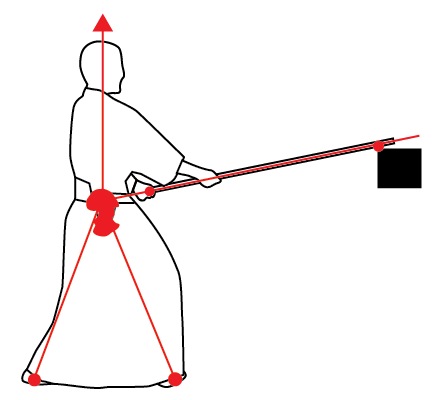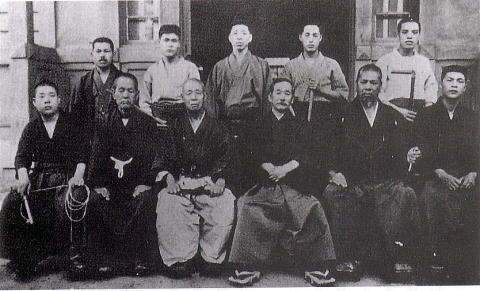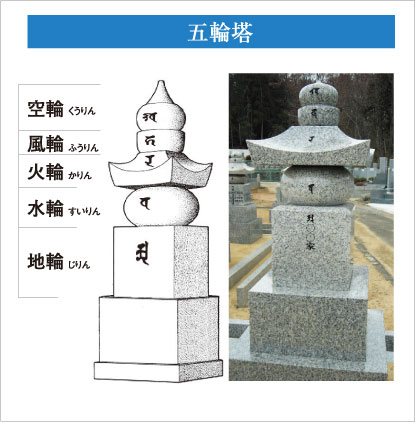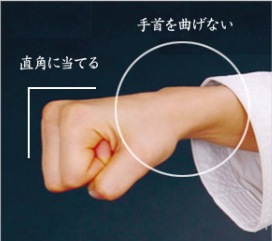本手打と違って、引落打の難しさは手の内のタイミングと、土台になる足腰の変化だと思う。
The most difficult part in Hikiotoshi compare with techniques like Honteuchi is the timing of Tenouchi and how lower part of your body changes during the strike.
本手打では、両脚も腰も決まっており、打ち込みに足で踏ん張った力が伝わりやすい。
It’s much easier to set feet positions and transfer power from your feet to Jo-saki in Honteuchi because feet, legs and a hip won’t move after it’s been made.

引落打では、太刀に杖が接触してから打ち終わるまでの間に、腰が動き続け、脚も形を変えながら踏ん張る必要がある。
However you must keep transferring your force from feet while your hip turning, legs changing shapes and feet turning from when Jo touch Tachi till finish sliding in Hikiotoshi.
足腰を、杖が太刀に接触したタイミングで決めてしまうと、結果的に杖をストップさせることで中途半端な打ち込みになるし、打ち終わりだけで決めようとすると、これも上手くいかない気がする。
The movement suddenly stop if you set your hip and legs when Jo touch Tachi. And if you try to set your hip and legs when Jo finish, this won’t work neither.
ということで、接触したタイミングをスタート地点として、手の内を決め続けながら、最終的に打ち終わりで100%になるように、下半身からの力を伝達させる必要がある。
Therefor, Tenouchi must start from when Jo touch Tachi and gradually adding force and finish 100% when Jo blow Tachi away by using your legs.
足腰について頂いたアドバイスを振り返ってみよう。
Here are advices I’ve received about legs for Hikiotoshi.
腰で打て
後ろ足の踵を上げるな
前足を回し過ぎたらだめ
少し沈む
(体重移動)
Use your hip to strike
Don’t rise rear heel
Don’t turn front foot too much
And this is what I noticed.
(Body slightly sink and move forward)
一番踏ん張ることを学べる「繰り付け」では足の角度よりも少し外側に膝を向け、張りを作ることが大事であり、腰が外に出ないように骨板を地面と平行にすること、姿勢を傾けないことがポイントであると思う。
I think Kuritsuke is the best one to learn how to make lower body. The key is your knees point slightly out than your feet, bum not sticking out, hip bone is level with floor and straight posture. What you want to avoid is your knees corrupting inward.
本手打の場合、後ろ脚の腰の前側のストレッチを感じれるように決めて、下半身と上半身を繋げる。この時やや半身で、決めるためには、後ろ足の角度は30-45度の間に自然となるはずだ。そうしないと、膝が抜けてしまう。
The front side of rear hip stretched, knee straight and slightly pointing out than rear foot in Honteuchi. The angle of rear foot will naturally be between 30-45 degree in order to keep rear knee engaged. This depends on physiques. For example my leg shape is “A” in the illustration bellow. Because I grew up in Japan sitting down on floor in Seiza position. You must think again what is natural when Japanese sensei say. It might not be natural to you.

Everyone is different.
私が思うには
This is what I think:
骨板を水平に保ち、傾けないように体重を平行移動させながら沈ませるために、膝を柔らかく使う。
Try not to tilt hip bone while moving your weight forward by using your knees soft and flexible when you turn. And you will naturally sink but only slightly.
次に、腰の回転でスピードが超加速するので、振り回されないようにコントロールする必要がある。つまり、捻り過ぎを防ぐために後ろ足の踵を適切な角度で踏む。

Next, hip turns and the speed of Jo-saki dramatically increase so that you need to control this with feet to stop from turning too much then loose the power and it’s direction. The angles of feet might be different depends on physiques but, you must press your feet down at the right positions.
手の内を最終的に決める打ち終わりでは、前足をやや半身の角度で踏み込み、膝を少し外側に張って踏ん張る。後ろ足の踵を踏み、腰の前の部分がストレッチされる。
I believe front foot finish at Yaya-hanmi like position and front knee slightly pointing out at the moment when you finish Tenouchi. And rear heel down to stretch front side of rear hip. Both knee slightly bend to give freedom in upper body.
接触した瞬間から、どのタイミングでも踏ん張れる姿勢を保ちながら、足や膝、腰と上半身を徐々に決めていく必要がある。つまり、釘を打つんじゃなくて、切る動作が必要である。
I think you need to be able to plant yourself and connect feet, legs, hip, shoulders, elbows, hands to Jo-saki at any moments from the beginning of Jo touch Tachi to finishing point. Therefor, it shouldn’t be like hitting a nail action but cutting. Gradually connect all of these from feet to Jo-saki during the Hikiotoshi strike, rather than stoping at wrong point.
初心者に教える場合、段階的に分けて、打ってから攻めるということで、この二つの動作が別々になることが多い。何故なら打ち損じているのに体が前に突っ込んでしまったり、杖より体が先に動いてしまうことが多いからだと、私は思う。
We sometime practice Hikiotoshi in two separate parts “strike” and “attack Ganmen” but this is because beginners often move their body before Jo. I’d like to start connecting these two actions.
しかし、この動作の流れをスムースに繋げて行くと、後ろ足がどのように動くべきなのか、考え直す必要がある。
What I mean is that need to study what rear foot should be doing.
打ち終わったときに、後ろ足が構えた時と同じ場所に留まっているのは、そこからの攻めであまり役に立ちそうもない。おそらく打ち込みで前傾しなければならないし、前足に体重移動してから後ろ足を持ってこなくてはいけないので、個人的な癖かもしれないが、顔面に付けた時の後ろ足のひかがみ(膝裏)が折れやすい。後ろ足を踏み出すときに、よっこいしょと、前足に体重をかけるので、膝が極端に曲がるからだと思う。もちろん伸ばそうと思えば伸ばせるんだけど、前傾しているのもあって、無駄が多いし、バランスも悪いし、片足にだけ余計に体重がかかった状態は武道的に良い姿勢とは思えない。
It doesn’t do anything if I kept rear foot where it is all the time while striking Tachi, and also from there to attack Ganmen. I most likely, need to lean forward to strike and my bodyweight on front foot. It might be my habit but, this cause my rear knee bend when I finish attacking Ganmen. Because when I step forward to attack Ganmen, all of my weight is still on front foot. It takes a lot of effort to stretch it. However I’m leaning forward as well and this make it difficult. Not very good balance, too much unnecessary movements and I don’t think putting weight on one side is a good posture in Budo.

私が改善した箇所は、後ろの足を少しだけ前に進めて、距離を盗む方法だった。返し突のように、体軸を自然に回転させると、後ろ足は自然と前足にまとわりついていく、とも思える。特に引きつけようとして後ろ足を前に出しているわけではない。あくまで、自然に動く範囲でだ。膝を緩めると、足の自由が利く気がする。
What I’m trying to adjust is moving rear foot only slightly forward like Gyakute to close distance. It could be only 1 cm but it changes everything. If you keep your body axis in centre and turn, your rear foot should come closer to front foot if the front foot is in the same place. Someone asked me if I need to put body weight on front foot to do this but no. It’s like keep your weight balance equal on both feet but turn. You must bend your knees and sink to do this but not too much. Slippery floors and socks helped me to understand how.
先生からは何度も指摘されたが、一番大事なのは膝の使い方だ。
I’ve been told from Yasumaru sensei many many times but the most important thing is how to use knees.
極端に重心が沈む必要はないと思う。しかし、膝を緩めて自然に動けばある程度沈まざるをえない。ここで大事なのは、腰の回転で前足に重心が乗っているわけではいということだ。前足を軸に回転すると、後ろ足が使えない。あくまでも、体軸は頭から真っ直ぐ背骨を通った地面と垂直でなければ、体が居着いてしまう気がする。
I don’t think you need to sink too much. But if you try to turn naturally with knees soft, you must sink down slightly. What’s important here is that if you put weight on front foot, can’t use rear foot. Body will stuck on floor and loose flexibility, unless the body axis is from head through spine and vertical to floor like floating.
That’s why you can’t use feet but hip to turn. As soon as you start using your feet, you get stuck. It’s all about using hip and soft knees.
打ち終わってからパッと顔面に付けることが出来て、その時の姿勢が正しく杖先に足腰から力が伝わって、しっかり攻めが出ているということは、体軸が傾いていたり、重心が前足や後ろ足に偏って乗っていたりすると、不可能ではないだろうが、難しい。
The posture should be the same as Honteuchi strike when you finish. Therefor, tilting body axis and putting weight on front foot when finished striking Tachi and all these doesn’t help to come back up to attack Ganmen. I’m sure you can do it but not the easiest way to do it. It’s not practical neither.
And I’m pretty sure you just hit the Tachi with just upper body.
先生方の演武では、無駄がなく、最短最大最速でビシビシと決めていき、しかしながら全体的にリラックスしており、流れに強弱がある。流れの強弱を作ろうとして、前足から後ろ足にとか、体重をヨイショと動かすのは、見ていて違和感がある。
There are contrast in Kata and techniques are quick, fast and large actions but seems very relaxed in Sensei’s enbu. We often try to make contrast in Kata but actually just moving body weight from one to the other, or just wait longer after strikes etc… I found these very strange when I compare with Sensei’s.
一番はっきりしているのは、先生方はあまり動かないし、汗もそんなにかかない。これを動きが派手でなく、ダイナミックじゃないなどと思うのは大間違いである。技は力技ではないし、打太刀をコントロールするのは仕杖である。威力のある技というのは、顔の表情で作るものではないし、大きく叫べば良いというものでもない。
What is most clear to me that Sensei doesn’t move a lot and doesn’t sweat much. But I think it’s wrong to say that it looks less powerful or dynamic etc… The techniques doesn’t come from muscles but postures and Tenouchi, and Jo control Uchidachi’s movements. The powerful techniques doesn’t come from scary face expression, shouting loud nor speeding up everything.




































